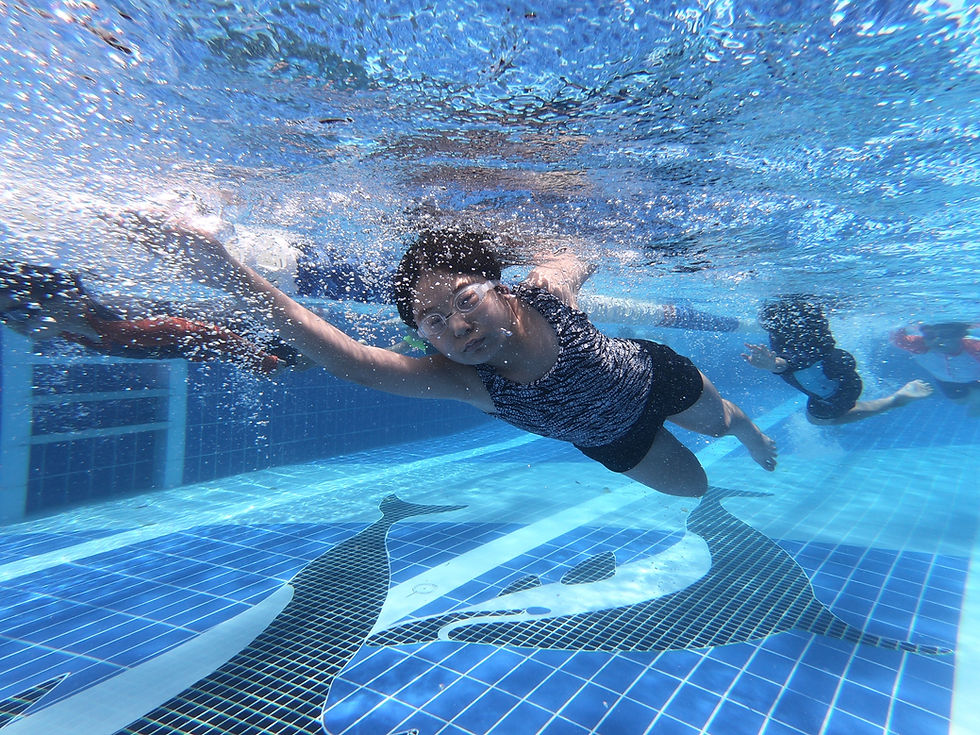How to Train Freestyle Swimming in Shallow Pools
- SG Sink Or Swim

- 2 days ago
- 2 min read

Not everyone has access to Olympic-size pools or deep water lanes for training. But the good news is that you can still train freestyle effectively in shallow pools—whether it’s a hotel pool, a community recreation pool, or even a backyard pool. With the right approach and drills, you can continue to build technique, endurance, and speed, even in limited water depth.
🌊 Challenges of Training in Shallow Pools
Before we dive into strategies, let’s acknowledge the main challenges of shallow water training:
Shorter pool length means more frequent turns.
Limited depth can affect your push-offs and streamline.
Crowding in smaller pools may disrupt rhythm.
But with a structured plan, these obstacles can actually help you focus more on technique, turns, and sprinting efficiency.
🏊 Freestyle Training Tips for Shallow Pools
1. Focus on Technique Over Distance
Shallow pools may not allow long continuous swims, so prioritize drills that enhance stroke efficiency:
Catch-up Drill – isolates arm movement for cleaner pull.
Fingertip Drag – improves high elbow recovery.
Single-Arm Freestyle – strengthens balance and rotation.
✅ These drills can be performed in shorter spaces while sharpening core freestyle mechanics.
2. Use Interval Training
Instead of swimming long laps, break your training into short, high-intensity intervals:
Swim 10–15 meters at sprint pace.
Rest 15–30 seconds.
Repeat 10–15 times.
This builds speed, power, and endurance while accommodating pool length limitations.
3. Practice Flip Turns and Push-Offs
Shallow pools force you to turn more often, making them perfect for refining flip turns:
Focus on a tight tuck and fast rotation.
Streamline properly off each wall, even if you only glide a few meters.
Treat every turn as a mini power-building opportunity.
4. Incorporate Resistance Training
Shallow pools are ideal for adding drag-based exercises:
Swim with a resistance band or tether.
Use hand paddles for added pulling strength.
Wear a drag suit or fins to increase workload.
This allows you to build power in freestyle stroke mechanics without requiring long distances.
5. Do Hypoxic and Breathing Control Drills
Breathing drills don’t require deep water:
Try breathing every 5–7 strokes in short sprints.
Practice exhaling underwater to develop rhythm.
Use short swims to simulate oxygen demand during races.
6. Supplement with Dryland Training
Shallow pool training is most effective when combined with strength and mobility exercises on land:
Core work (planks, Russian twists) for body alignment.
Resistance band pulls to simulate freestyle catch and pull.
Plyometrics for explosive push-offs.
✅ Key Takeaway
Training in shallow pools doesn’t have to limit your freestyle development. By focusing on technique, interval training, resistance drills, and turns, you can maximize your sessions and even gain unique advantages—like sharper flip turns and better breath control.
With creativity and consistency, shallow water can still be a powerful training ground for freestyle swimmers.





Comments